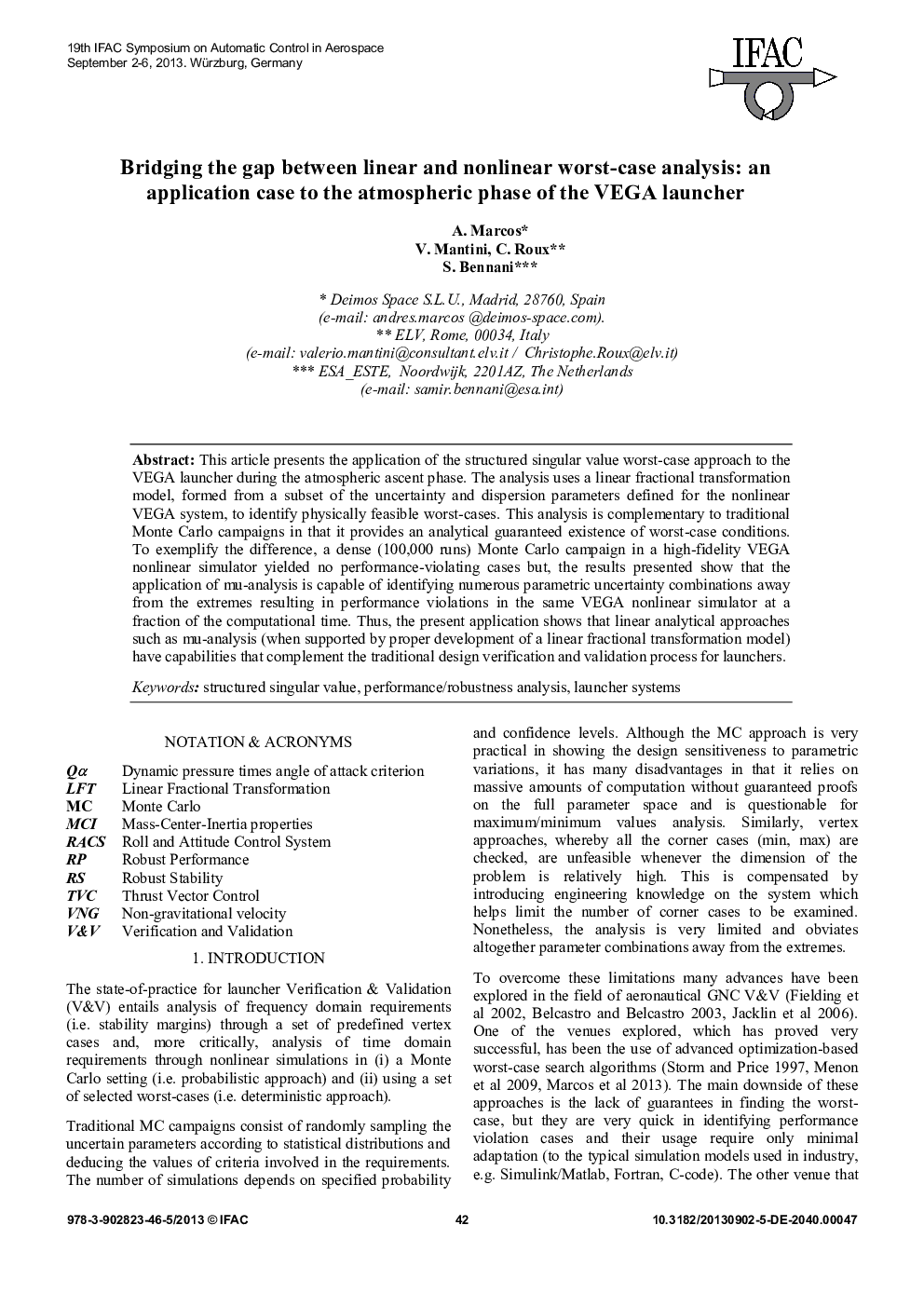| کد مقاله | کد نشریه | سال انتشار | مقاله انگلیسی | نسخه تمام متن |
|---|---|---|---|---|
| 709134 | 892054 | 2013 | 6 صفحه PDF | دانلود رایگان |

This article presents the application of the structured singular value worst-case approach to the VEGA launcher during the atmospheric ascent phase. The analysis uses a linear fractional transformation model, formed from a subset of the uncertainty and dispersion parameters defined for the nonlinear VEGA system, to identify physically feasible worst-cases. This analysis is complementary to traditional Monte Carlo campaigns in that it provides an analytical guaranteed existence of worst-case conditions. To exemplify the difference, a dense (100,000 runs) Monte Carlo campaign in a high-fidelity VEGA nonlinear simulator yielded no performance-violating cases but, the results presented show that the application of mu-analysis is capable of identifying numerous parametric uncertainty combinations away from the extremes resulting in performance violations in the same VEGA nonlinear simulator at a fraction of the computational time. Thus, the present application shows that linear analytical approaches such as mu-analysis (when supported by proper development of a linear fractional transformation model) have capabilities that complement the traditional design verification and validation process for launchers.
Journal: IFAC Proceedings Volumes - Volume 46, Issue 19, 2013, Pages 42-47